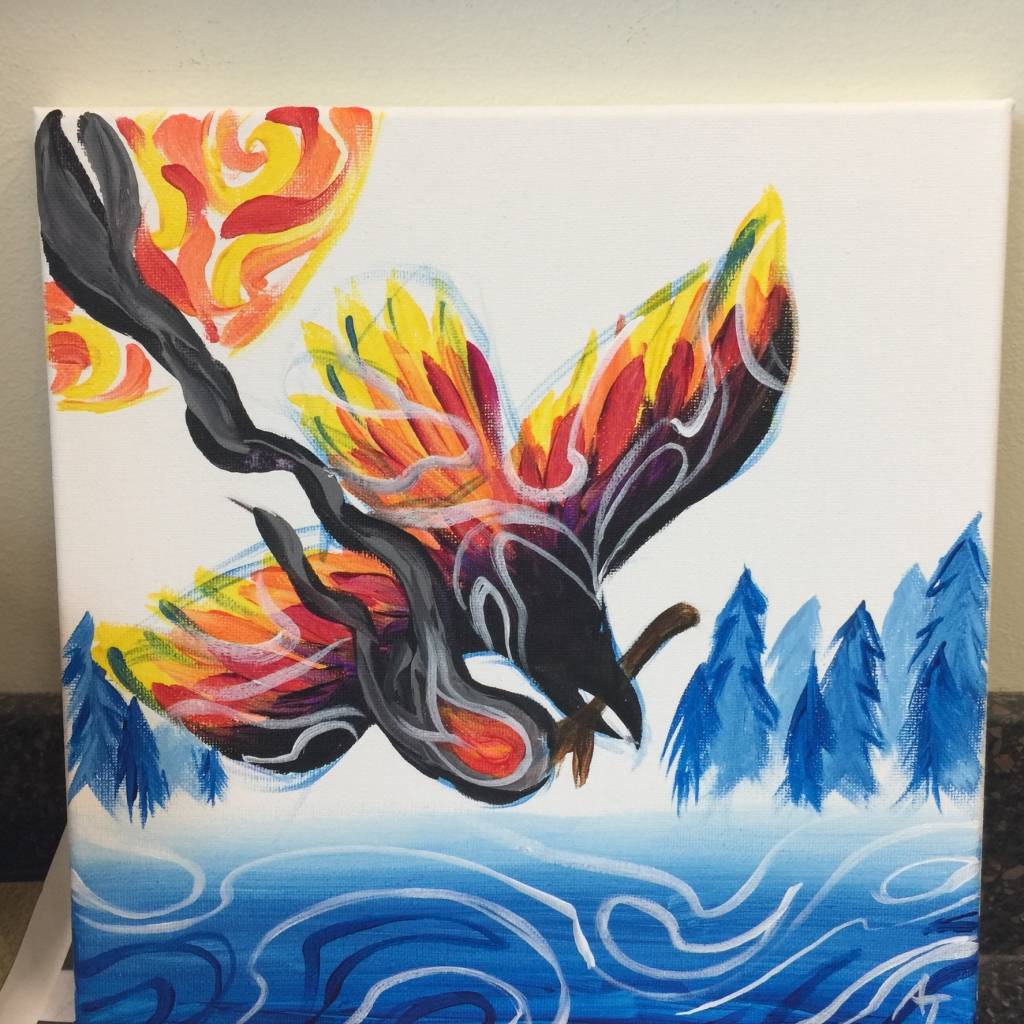Project: Culture and Youth Engagement Project
Grantee: Covenant House Alaska
Story by: Jason Searle
Covenant House Alaska (CHA) operates numerous programs for youth experiencing homelessness between the ages of 13-24 located in Anchorage, Alaska. Although CHA’s facilities exist in the state’s most populated municipality, youth from all over Alaska come to its doors in need of shelter, support, and encouragement. From year to year, approximately half of those receiving services from CHA are of Alaska Native heritage, and CHA fully realizes that the opportunity to learn about and experience cultural traditions and practices is invaluable as a means for youth to develop self-esteem and build resilience in the face of life’s inevitable challenges.
Thanks to funding from The CIRI Foundation’s Heritage Project Grant, CHA was able to continue to enhance its programming by working with culture-bearing organizations and individuals within the State of Alaska. These resources have provided CHA youth with much needed exposure to Alaska Native values, traditions, practices, spirituality, language, games, cuisine, and history over the course of the last six months. Activities made possible through The CIRI Foundation’s support of CHA’s Culture and Youth Engagement Project included: visits to the Alaska Native Heritage Center, Native Youth Olympic Games, Yup’ik language circles, activities rooted in Alaska Native mythology, conversations pertaining to Alaska Native spirituality, discussions about values inherent in Alaska Native cultures, education about the history of indigenous peoples in the state of Alaska, Yup’ik wooden mask carving instruction, a class on the resurfacing art of Inupiaq tattooing, multiple sewing projects, a beading project, and the preparation of traditional foods loved among the Covenant House youth.

Youth participants, CHA staff, and cultural bearers in this community who contributed to the Culture and Youth Engagement Project all benefited in numerous of ways. Many of the Youth served by CHA are of Alaska Native heritage and were born and raised for much of their lives in villages within rural Alaska. As these youth come to Anchorage to seek opportunities they can sometimes find themselves without a stable support system to help guide and encourage them through the vast cultural differences that exist between this metropolitan environment and the rural area from which they originated. This project allowed opportunities for youth to engage in activities and experiences that may have served to alleviate some of the culture shock associated with such a drastic and sudden change, while also reducing some of the homesickness youth often speak of experiencing when they are removed from the cultural traditions and practices that have become a vastly important component of their identity. Youth who had appeared to be uncertain of how to interact within this new environment were observed to approach the facilitators of some cultural groups, participate, and open up to them about practices they had appreciated while growing up in their previous communities. These moments served as the beginning of an open dialogue with youth who had recently come to CHA from rural areas of Alaska, a vehicle with which to begin forming trusting, positive relationships with caring adults here in Anchorage.
A number of CHA’s residents who are of Alaska Native heritage were raised in more urban and populated parts of Alaska and may have never had exposure to certain facets of their cultural identity. Others can become disconnected with their cultural identity when separated from their families and communities, experiencing diminished access to cultural traditions and practices. Youth in situations such as these often seemed highly interested in participating in any chance available to learn about or practice traditional ways of life that they had not witnessed or engaged in during their urban upbringing. Again, it was observed that many youth who seemed to have displayed a preference to not engage in groups and outings were more likely to do so when the experience was based in Alaska Native culture. In this situation these young individuals did not seem hesitant about asking questions of and sharing information with the cultural bearer or artist facilitating the group, a trend which simultaneously appeared to enhance the positive relationships built with CHA staff that were also in attendance. Non-native Youth residing at CHA also benefited immensely by the opportunity to bear witness to cultures that differ from their own in a positive, structured, entertaining, and inclusive setting. These efforts may have contributed to dispelling inaccurate stereotypes about Alaska Native peoples while simultaneously fostering an increased appreciation of cultural diversity in the younger generation, those with the capacity to become our future leaders if they receive this valuable opportunity, support, and encouragement.
Since CHA opened its doors in 1988, it has provided support to Alaska Native youth in need and will continue to do so. This project has allowed CHA to continue to enhance its ability to individualize positive interventions in the lives of Alaska Native youth in a culturally sensitive and holistic manner, which without The CIRI Foundation’s valued support would not have been possible.
